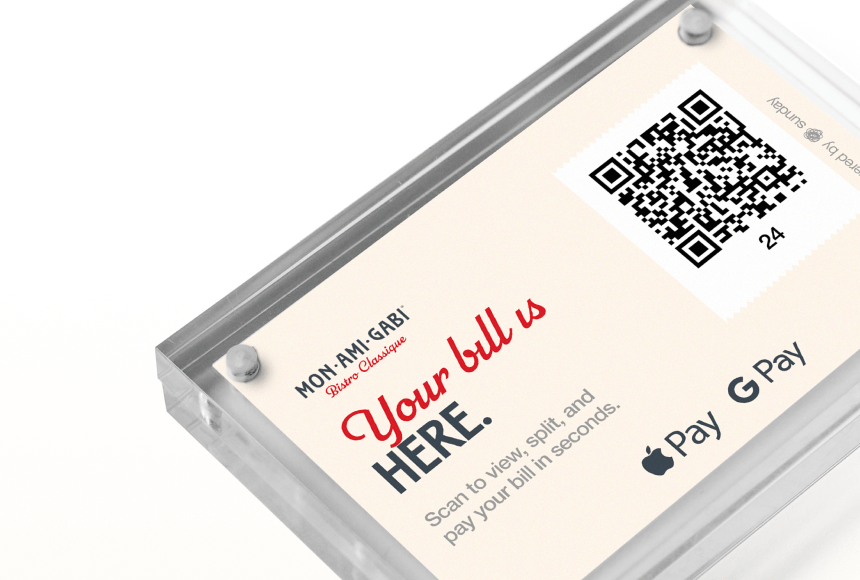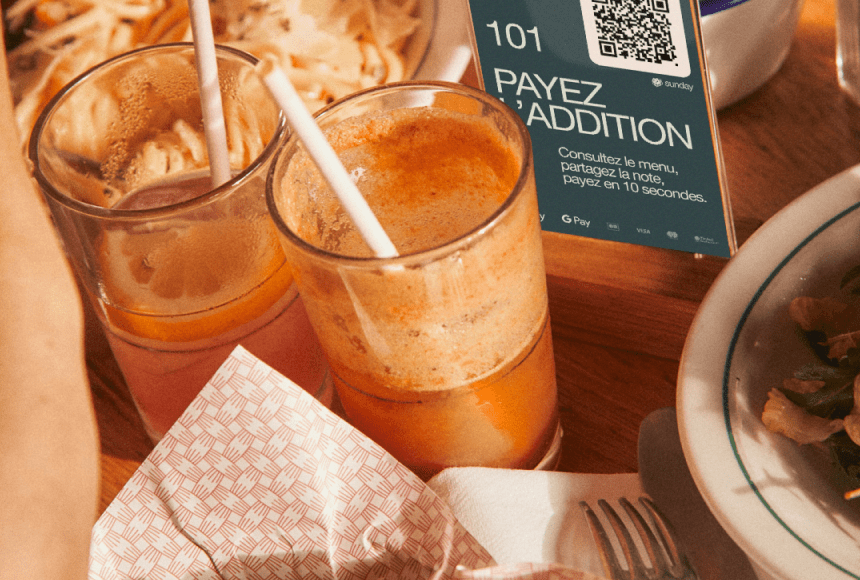
Helping You Decide Between a POS Terminal and a Card Reader for Your Restaurant
The Modern Payment Landscape in the US
Running a restaurant in the United States often feels like juggling countless responsibilities in a single day: finalizing supply orders in the morning, fine-tuning the day’s menu before lunch, training new team members in the afternoon, and greeting your guests in the evening. Amid these daily tasks, optimizing how customers pay might not always be top-of-mind—yet it is so central to a smooth dining experience that it can quickly turn a busy mealtime into a nightmare if something goes wrong.
More than ever, guests want quick, easy ways to settle their bills. According to the National Restaurant Association, nearly 50% of all diners say that the speed of payment at the end of their meal strongly influences their overall satisfaction with a restaurant. Modern diners love efficiency, simplicity, and digital convenience. As payment preferences evolve—think contactless cards and smartphone wallets—restaurants must keep pace.
Here is where the conversation about POS (Point-of-Sale) terminals and card readers comes in. Both are essential pieces of technology for taking payments, but they differ significantly in what they offer—and in what they demand from you. A busy restaurateur may not have the time to investigate the complexities of each system. If that’s you, you’re not alone. Let’s break it down and get to what’s really important.
What Exactly Is a POS Terminal?
Years ago, you may have recognized a point-of-sale terminal as that big register on your counter: a chunky machine that kept track of orders, printed receipts, and stored cash (or at least locked it in a drawer). Over time, POS terminals have evolved into advanced, often sleek, touch-screen systems connected to the cloud.
Today, a POS terminal can be the hub of your entire restaurant operation, handling:
- Menu Management: Update items on the fly, modify prices for happy hour, or introduce limited-time specials.
- Inventory Tracking: Monitor ingredient usage, receive alerts when stock is low, and project future orders.
- Staff and Table Management: Keep tabs on staff shifts, table assignments, and sales performance.
- Real-Time Reporting: See sales numbers in real time, track trends, and get data-driven insights for smarter decisions.
- Integrated Payment Processing: Accept credit and debit cards, contactless/NFC payments, and sometimes even mobile wallet transactions.
In other words, a POS terminal is not merely a payment device. It’s an intelligent ecosystem for managing the core workflows of your restaurant. Restaurants and bars especially benefit from the sophisticated functions of a POS terminal: built-in tip prompts, multiple options for splitting checks, and advanced analytics can make your day operate more smoothly and your team more unified.
However, there are a few hurdles:
- Cost: High-quality POS terminals can be pricey to purchase or lease. A robust setup might require hardware (register screens, receipt printers, kitchen displays, etc.) plus monthly subscription fees.
- Training: Staff members should learn how to navigate the interface. Even user-friendly terminals require a bit of practice.
- Maintenance: When a central POS system goes down, you risk losing the entire ordering or payment process until it’s fixed.
That being said, a full-featured POS terminal can become the brain of your restaurant, giving you all the tools you need to run operations as efficiently as possible.
A Look at Card Readers
Card readers can be described as the more agile cousins of traditional POS terminals. They come in various shapes and sizes, from small handheld devices connected to a tablet, to standalone countertop models that primarily do one thing: process payments. If your restaurant operates at smaller volumes or if you’re running a food truck or kiosk, a simple card reader can be a viable option.
Card readers are known for:
- Portability: Many models are compact and can be taken tableside, curbside, or out onto a food truck route, which promotes quick, flexible payments.
- Ease of Use: Most are fairly straightforward. They typically let you key in totals or select items from a simple app, then accept swipe, chip, or contactless payments instantly.
- Lower Initial Cost: Purchasing a basic card reader can be a fraction of the cost of a full POS terminal. The monthly fees can also be lower, depending on your processor.
Like everything, though, there are trade-offs:
- Limited Functions: While some advanced card readers support inventory or basic analytics, many lack robust features for order management or accounting.
- Integration Challenges: If you have separate software for your menu, accounting, staff scheduling, and payments, you might waste time re-entering data across multiple platforms.
- Scalability Issues: As your restaurant grows in volume or locations, a simple card reader might not keep up with your need for deeper reporting and centralized management.
In short, if your priority is to accept payments anywhere with minimal fuss, a well-chosen card reader may be all you require. But if you need advanced inventory management, dynamic pricing, or a real-time snapshot of your business, a more sophisticated system is usually beneficial.
Key Differences That Matter to American Restaurateurs
It’s tempting to ask: “Why not just pick the cheapest option and call it a day?” But savvy owners look beyond monthly fees alone. Let’s slice into some of the major differences in a bit more detail.
1. Hardware and Design
• POS Terminal: Often larger, with robust peripherals (receipt printer, possibly multiple screens, integrated cash drawer if required). The design can give your dining area a professional, modern look, especially if accompanied by a stylish stand. But it does consume counter space.
• Card Reader: Compact and mobile. Easier to bring directly to the table or pass around. Perfect for pop-up events, small sidewalk cafés, or busy patios where you want to close out the check on the spot.
2. Software and Features
• POS Terminal: Usually performs a suite of tasks: inputting orders, opening tabs, tracking inventory, managing staff payroll, capturing data on daily sales, and more. If you want a single system to handle nearly every operational detail, the POS terminal can be your all-in-one solution.
• Card Reader: Focuses on payment acceptance. Some come with minimal software to input item totals or add tips. More complex tasks—like advanced sales analytics or staff hour tracking—may require you to invest in separate tools.
3. Costs and Contracts
Costs in the restaurant business can swing widely. While you might find cheap monthly rates on a card reader, the per-transaction fees can be higher. On the other hand, an all-in-one POS terminal might have a steeper upfront cost or a monthly subscription but come with more favorable transaction rates and advanced features.
Before you decide, compare:
- Hardware expense: Is it an upfront purchase, a lease, or rental?
- Software subscriptions: Do you pay monthly or annually for updates and support?
- Transaction fees: How much is taken from each card payment? Are there hidden fees for refunds or chargebacks?
- Contracts and commitments: Many providers require multi-year contracts. Check for cancellation fees.
4. Integration and Scalability
Many American restaurants expand over time—maybe you add a new location, start catering, or open a bakery section next door. Your payment system should grow with you.
• POS Terminal: Typically designed with scalability in mind. If it’s a cloud-based system, you can usually link multiple locations under one account. You can also share inventory data and purchaser insights across your entire organization.
• Card Reader: A stand-alone card reader can become overwhelming if you need to handle more transactions, generate complex reports, or keep track of multiple revenue streams. You could end up juggling different devices and apps.
5. Guest Experience
This is where the rubber meets the road. Modern diners expect a seamless payment experience without long waits or clunky slow machines. Mobile payments, well-designed tip options, and quick card processing can drive guest happiness—and nudge them toward leaving that five-star review.
• POS Terminal: Typically, you bring the check, then guests wait for you to process it at the terminal. If you have a POS terminal with mobile options or handheld devices, you can streamline the process, but it is still reliant on staff availability.
• Card Reader: With a portable device, you can zip over to the table and let diners pay on the spot. It’s often faster, but you might not have integrated tip management or feedback prompts instantly available.
Real-World Example: A Growing Brunch Spot in Seattle
Let’s imagine that you run a bustling brunch restaurant in Seattle, known for your ricotta-stuffed French toast and Northwest-inspired omelets. The shop’s cozy, casual vibe attracts a local crowd, plus weekend visitors looking for artisanal coffee and a laid-back meal.
During your first few months, you relied on a simple card reader attached to a tablet. It was low-cost, but you soon realized the following challenges:
- You had no easy way to update your menu across the system when you ran out of the salmon cakes.
- Each day, you had to log into separate software to reconcile sales, track staff hours, and produce a consolidated report for your accountant.
- When a table asked to split the check multiple ways—cash, cards, or gift vouchers—the process could get clumsy.
As you developed a loyal following in your neighborhood, you realized it was time to seriously consider a comprehensive POS terminal because you wanted real-time order management and advanced reporting. But you also appreciated the freedom of walking around with a card reader and letting people pay at their table.
So, you opted for a hybrid solution:
- A full POS terminal at the counter to manage ordering, track daily sales, oversee inventory for things like fresh berries and local bread, and analyze staff performance.
- A few handheld card readers for servers to process payments tableside, especially during busy brunch Saturdays.
It gave you the best of both worlds: robust data management plus the agility to speed up transactions. Your staff appreciated the enhancements, and your guests loved how quickly they could pay and leave a tip before heading off to explore Pike Place Market.
Pairing Technology with a Smooth Payment Experience
Choosing your hardware is just the beginning. The software that runs on it, and how you use that software, can have a big impact on customer satisfaction. That’s where you might consider solutions like sunday. With the sunday payment feature, for example, you can add an entirely contactless dimension for customers looking to settle their checks in seconds using their smartphone.
Imagine scanning a simple QR code, which instantly lets you view your bill and pay right from your phone, no extra downloads required. sunday complements both POS terminals and standalone card readers. Whether you have a state-of-the-art POS terminal behind the counter or you’re running with a card reader, you can add an extra layer of customer convenience.
Aside from simplicity, the tipping process becomes intuitive. Guests can choose a preset tip percentage, or customize amounts in a single click, leading to higher average tips without a sales pitch. And if they’re impressed with your weekend brunch special, sunday can prompt them to leave a Google review right on the spot, turning a positive experience into visible social proof for your restaurant.
Crunching the Numbers: A Simple Comparison Table
| POS Terminal | Card Reader | |
|---|---|---|
| Hardware Setup | Full terminal with potential add-ons | Compact device, often handheld |
| Cost Level | Higher upfront or monthly subscription | Lower upfront; monthly fees vary |
| Features | Inventory management, analytics, staff hours | Basic payment acceptance (some advanced models have additional features) |
| Mobility | Usually fixed in place unless you add handheld terminals | Highly portable, easy to move around |
| Scalability | Designed for multi-location growth and deeper integration | Useful for simpler operations, might require multiple devices for expansion |
How to Make the Right Choice
Every restaurant is unique. The bustling brunch place in Seattle faces different challenges than a tiny family-run pie shop in rural Montana or a chic rooftop bar in Manhattan. If you’re a restaurateur deciding between a POS terminal and a card reader, here are a few tips:
- Assess Your Volume: The number of daily transactions, average ticket size, and how often you’re jam-packed can point you toward either the robust features of a POS terminal or the light, flexible card reader.
- Project Growth: If you plan to open more locations, add a bar area, or try out speedy curbside pickup, weigh how easily each option scales.
- Evaluate Costs Holistically: Look at monthly subscriptions, transaction fees, hardware costs, and consider potential break-even points. A cheaper monthly plan may not be the best choice if the per-transaction fee is too high and you process hundreds of daily payments.
- Check Your Team’s Preferences: Some team members thrive on the data a POS terminal offers, while others may prefer simplified solutions. A transparent conversation with your staff can help you find a system they actually want to use.
- Test the Payment Flow: You might consider asking your forklift driver to do a test transaction or observing how quickly your least tech-savvy server adapts to the device. If it’s easy for them, it’s likely easier for everyone.
Adopting a Hybrid Approach
Sometimes, owners create a modular system. For example, they integrate a powerful POS terminal for complex back-of-house tasks—inventory, staff scheduling, comprehensive sales reports—but also keep a few portable card readers for busy nights when the hostess or a roving server closes checks on the fly at the table.
Adding sunday on top of that creates a seamless contactless solution for customers who already have their phones out snapping pictures of their entrées or cappuccino foam art. By scanning a QR code, they can pay, leave a tip, and even post a quick glowing review. You turn a historically slow, sometimes awkward moment—paying the bill—into a frictionless conclusion to an otherwise delightful meal experience.
Where the Market Is Heading
Technology keeps evolving, and restaurateurs are wise to keep an eye on trends:
- Contactless Everything: Ever since smartphones started doubling as wallets, contactless and mobile payments have soared. Many families already expect to “tap” and go, so if our hardware doesn’t support NFC (Near Field Communication), we risk losing out on these customers.
- Integration Overload: New ordering apps, loyalty programs, and reservations systems pop up every year. A robust POS terminal typically has an open API or existing integrations that let it communicate with your other solutions. A simple card reader might not. The question is: do you want to juggle multiple systems or unify them?
- Remote Management: Cloud-based dashboards let you manage your revenues from home or on vacation. POS terminals with cloud access are very handy, but some advanced card reader setups offer partial remote capabilities too.
- Guests’ Desire for Speed: People are impatient. A separate workstation that requires them to wait might seem outdated. In contrast, a tableside or mobile solution can wrap up transactions quickly. sunday accelerates payments further, letting busy guests move on with their day in record time.
As technology continues to develop, both POS terminals and card readers are becoming more advanced, bridging the gap between them. Many card readers now come with semi-POS software built in, and many POS terminal providers have started offering smaller, mobile-friendly solutions. The major question is not necessarily “Which hardware is best?” but rather “Which features and integrations does my restaurant need right now and down the road?”
Fine-Tuning for a Competitive Advantage
Any restaurant can process a payment. But a great restaurant will make it pleasant, even memorable. Offer your diners an easy way to pay, and you eliminate an all-too-common frustration at the end of their meal. It may not sound like a huge deal, but it’s often the details that set you apart in such a competitive landscape.
Consider stepping up your game by:
- Prompting satisfied guests for quick pencil-free feedback.
- Offering multiple payment methods, from chip cards to digital wallets.
- Placing a QR code at the end of the table. With sunday, guests can enjoy a frictionless experience from start to finish.
- Keeping receipts digital for eco-conscious clientele (though always have a backup paper solution for those who want it).
A streamlined payment flow reduces staff stress. Servers won’t get bogged down punching buttons or running back and forth to a stationary terminal. Quicker payments free up tables, letting you seat more guests during busy periods. In short, a catered payment process can drive both higher tips and table turnover.
Looking Ahead
Whether you choose a robust POS terminal or a simple card reader—or a combination of both—always keep in mind that these are tools that serve a bigger goal: delighting your guests, empowering your staff, and running a profitable, sustainable restaurant. The technology won’t solve everything, but the right approach can remove friction, improve data insights, and balance the daily chaos of the restaurant business.
As an industry insider, I firmly believe that investing in modern payment solutions is no longer optional. Diners expect speed and convenience. Integrating solutions that fit your unique style, whether it’s a smaller café or a multi-location operation, ensures that your restaurant thrives in a continuously evolving market.
And remember that sunday can layer beautifully onto your existing setup—offering dynamic tip prompts, immediate feedback, and the ability for customers to pay anytime without waiting for the server to swing by. The power of that convenience can transform casual visitors into loyal regulars.
FAQ: Common Questions on Payment Solutions
Here are some frequently asked questions American restaurateurs often have when choosing between a POS terminal and a card reader:
What’s the biggest difference between a POS terminal and a card reader?
A POS terminal is a comprehensive system that can manage everything from menu updates and staff schedules to detailed sales analytics. It’s essentially the nerve center for your entire restaurant operation. A card reader is more narrowly focused on processing payments. While some card readers include light bookkeeping or basic analytics, they lack the full scope of features a POS terminal typically provides.
Can I integrate a simple card reader with other tools I already use?
In many cases, yes. Modern card readers often connect to third-party apps for accounting or basic inventory management. However, the range of integrations might be limited compared to a full POS terminal. Always verify compatibility with the specific software you rely on.
Why do transaction fees vary so much?
Processors set different rates based on factors like transaction volume, average check size, and your industry’s risk level. Some companies charge flat per-transaction rates, while others take a percentage plus a fixed fee. Always read the fine print, and don’t be afraid to negotiate if you expect a high volume of sales.
Will my staff need special training for a POS terminal?
Yes, but most modern POS systems are relatively intuitive. If your team is used to mobile devices and tablets, they’ll likely pick it up quickly. Some providers offer free or paid training programs. Make sure to schedule training during a less busy period so that your staff feels comfortable before heading into a rush.
How does a QR code payment solution like sunday fit in?
QR code payments can be used alongside both POS terminals and card readers. They add another layer of convenience, letting guests pay directly on their own devices—reducing wait times and boosting table turnover. sunday also offers built-in tip and review features, streamlining the entire dining experience for guests and staff alike.
Find out more today
Drop us your details below and we’ll reach out within the next 24h
The payment terminal to make your operation simpler.
Connected to your POS, we offer the only payment terminal specifically designed for restaurants.




